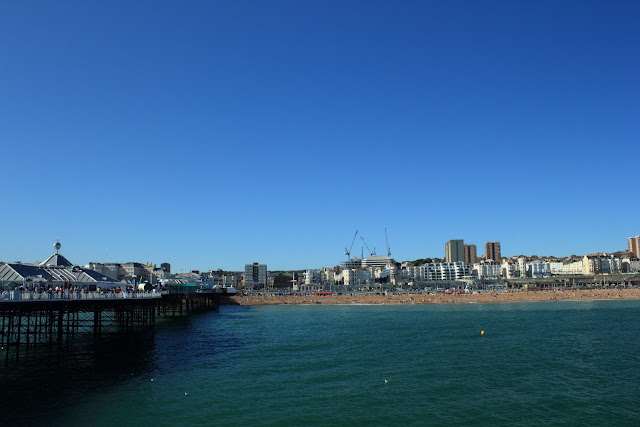We got cheap ones, to "learn" with, because, well, we didn't even really know how they worked, if they would be worth it, etc. They have been like £2-£5 each($3-$8). And that's cheap, because "quality" filters cost anywhere from $40 for a clear UV, to $100+ for a polarizer. So yeah...
This is what they look like:
So the simple ones, are the clear ones(bottom), just called UV filters. They block out UV light, which is more useful back in film days, since UV light would give your pics a bluish haze, from what I have read, so in digital days, they are used by most people "just to protect your lens". So they don't change the image(in any desirable way, but the cheap ones allegedly degrade your image slightly), they are just there in case you accidentally bump your camera lens into something, so the filter takes the scratch, not the lens. That's what we use them for.
The next one is the ND4 filter. It stands for neutral density, some call it a grey filter. It doesn't change the image either, just reduces the amount of light entering your lens. Why do you want that? So you can do this:
 |
| Without the filter, I would not have been able to isolate the rooster in the middle, and it would just be a lot of chickens... |
These pics were all taken with the 50mm f/1.8 lens. Which opens really wide, and gives these nice blurry backgrounds. Well, it opens wide, so it lets a lot of light in. Sometimes too much, like in bright conditions, such as anytime during the day, outside. Without the ND filter, I would not have been able to open so wide(1.8!), and the background would not have been as blurred.
Now the polarizer filter. It also reduces the amount of light that comes in, but it has a twist, since it does change the image. It is mainly for deep blue skies! It makes that blue really come out! It does this by limiting the direction in which light enters your lens, and i don't know the optics exactly, but that makes the blue sky look extra blue.
This is an example of one without the polarizer:
And this one does have a polarizer:
This is unrelated, but I love these cultural differences. Tires, spelled with a "y" here instead of an "i". I love these little differences...







Oh wow, you sound like a pro now!!
ReplyDeleteThat's so crazy, I never would have imagined there was so much about photograph until I started reading your blog entries :P
ReplyDeleteBefore this I never took photos with my cellphone because it has a crappy camera :P, but after some tweaking they look decent.
yup, polarizers make a huge difference, i can really tell cause i wear some sometimes ha
ReplyDelete